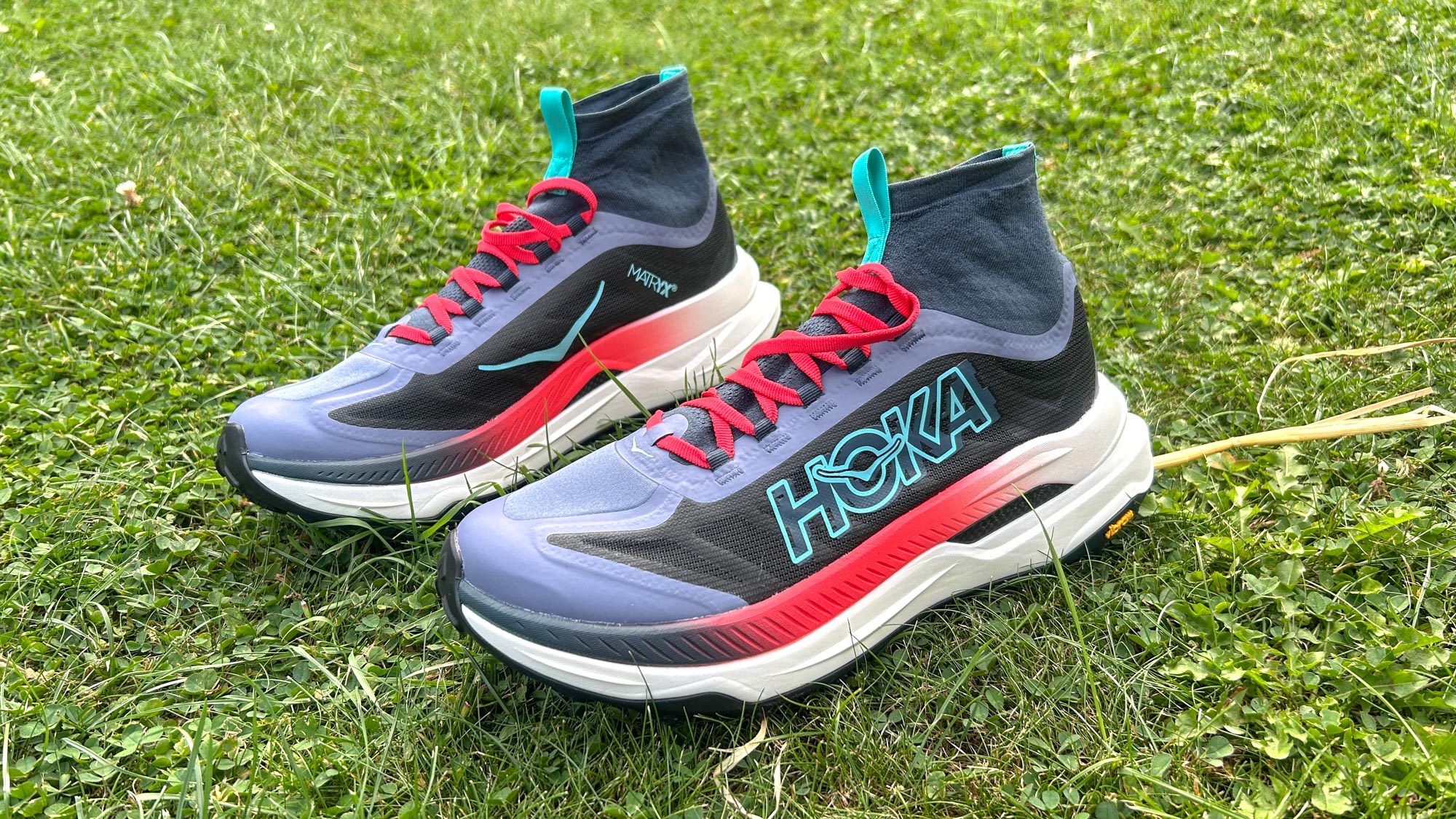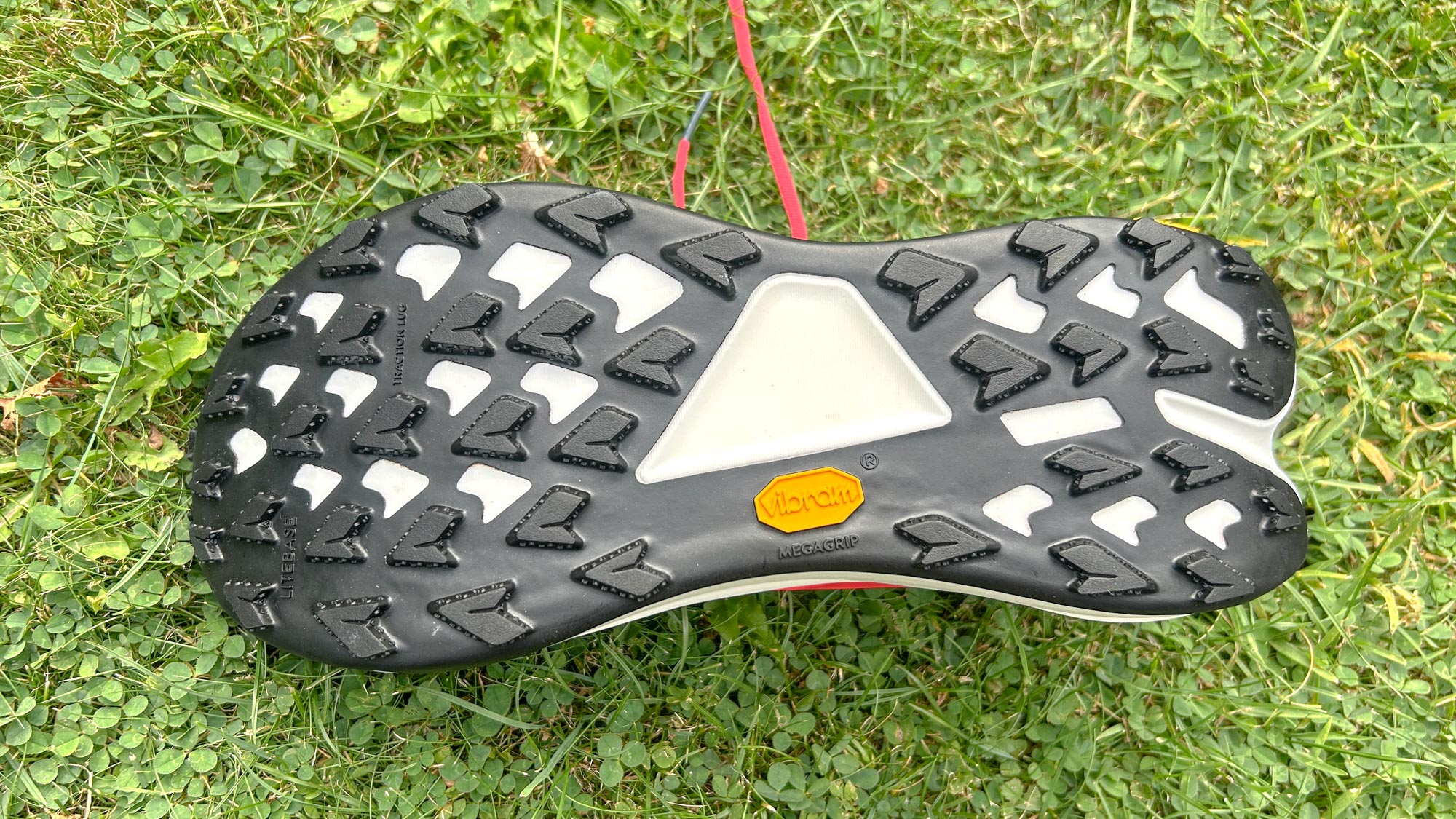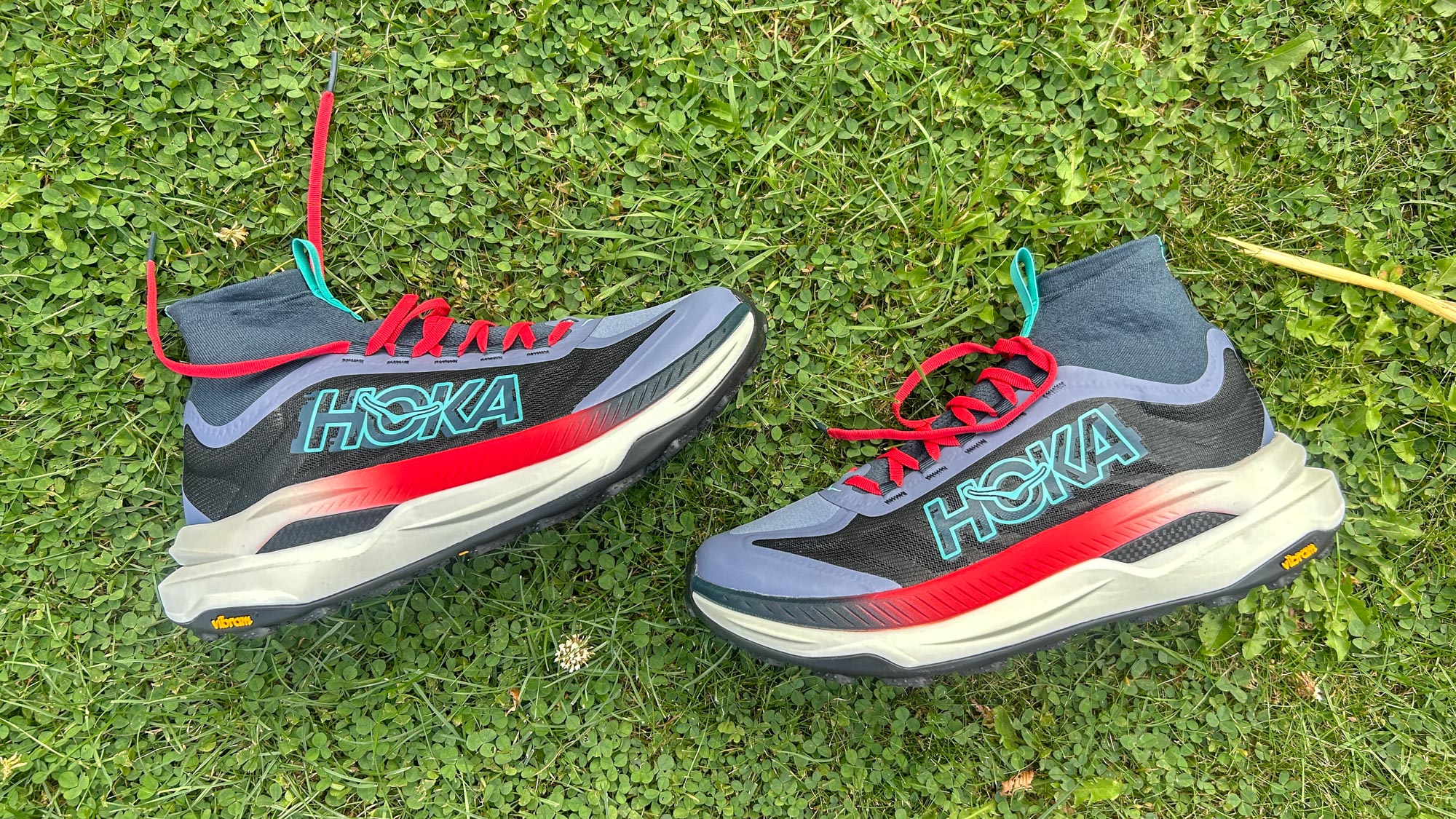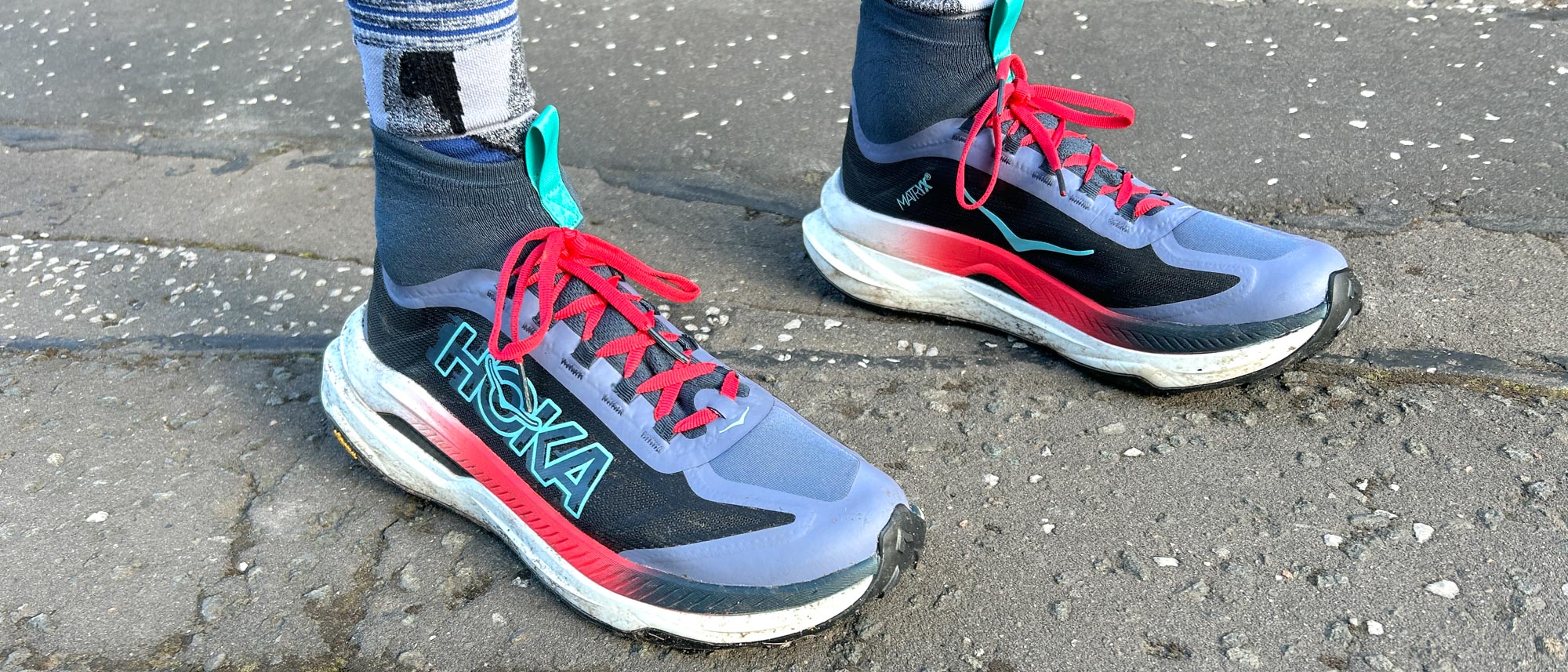Tom's Guide Verdict
The Hoka Tecton X3 is among the greatest carbon plate trail running shoes I’ve tested, with the new midsole producing a fast and bouncy ride for your off-road events. The soft midsole can feel unstable at times, but it’s manageable and the protection and spring offered by the Tecton X3 makes it ideal for long races in particular.
Pros
- +
Bouncy ride
- +
Protects legs on long, hilly runs
- +
Grips well on most terrains
Cons
- -
More expensive than other options
- -
Not the most stable shoe
Why you can trust Tom's Guide
The Hoka Tecton X3 is Hoka’s most ambitious and impressive trail-racing shoe yet. The new and improved midsole make it bouncier and faster than past models, and it’s one of the best trail running shoes you can get for long races in particular.
There are downsides to the updated design, with the Tecton X3 being less stable than the Tecton X2, and it’s also considerably more expensive than both the Tecton X2 and most trail shoes in general. It does offer something special for the price, but there are better value options even if you want a trail super-shoe, like the Adidas Terrex Agravic Speed Ultra.
In my Hoka Tecton X3 review I’ll go through its pros, which are considerable, as well as the cons, and provide alternatives that might suit your trail running needs at a lower price.
Hoka Tecton X3 review: price and availability

The Hoka Tecton X3 launched in August 2024 and costs $275 in the US and £220 in the UK. It’s considerably more expensive than the Hoka Tecton X2, which was $225 at launch, and it’s one of the most expensive trail running shoes available in general.
Hoka Tecton X3 review: design and fit
The Hoka Tecton X3 is available in two colors, with the Stormy Skies/Cerise color I tested being the main version of the shoe available at launch, while a limited edition of the shoe in black and blue came out to coincide with UTMB 2024.
There is no wide version of the shoe, which does have quite a snug fit. I was happy in my normal size, but could maybe have gone a half size up to get more room in the toe box, because I sometimes felt this area was a bit cramped when running downhills in particular.
The Tecton X3 has a drop of 5mm and a high stack height of 40mm at the heel and 35mm at the forefoot in the men’s shoe, and 39mm at the heel and 34mm at the forefoot in the women’s shoe.
Upper

The Tecton X3 has a Matryx upper with a built-in gaiter that stops debris from getting into the shoe. There is also a toe bumper to provide extra protection at the front of the shoe, and the upper is made from a fast-drying material.
I found the upper to be comfortable and that it held the foot in place securely on uneven ground and fast descents. Having the gaiter built-into the shoe is a novel concept and one I’m not sure will catch on — I rarely run on terrain like sand where you need a gaiter, and normally if I did I would just attach one to a shoe — but it didn’t detract from the comfort of the upper or make the Tecton X3 unduly hard to get on.
Midsole
There are two layers of bouncy PEBA foam in the Tecton X3’s midsole, with this material being lighter, softer and springier than the EVA foam used in past versions of the shoe.
It’s more akin to the foams used in Hoka’s best carbon plate running shoes for the road, the Hoka Cielo X1 and Rocket X2, and it provides a lot of protection as well as a fast and run ride.
In between the two layers of foam are two carbon plates that run in parallel down the length of the Tecton X3. This is designed to create a more flexible and stable ride than a full plate, while still also delivering the propulsive feeling of a plated shoe. Winglets on the front of the plates add more stability to the forefoot of the shoe.
Outsole

The Tecton X3 uses a Vibram Megagrip Litebase outsole with 4mm lugs, which are a little longer than the lugs on the Tecton X3 and provide more bite on soft ground.
The outsole is designed to deliver traction on a wide range of terrain, as you’d expect from a shoe designed for ultramarathons where you might be cresting a rocky mountain, charging down a slippery forest path, and running on the road all in the space of a few hours.
Hoka Tecton X3 review: running performance
The updated design of the Hoka Tecton X3 was first hinted at with the prototype of the shoe that Jim Walmsley wore to win UTMB in 2024. This version of the shoe was dubbed the Hoka Tecton X2.5 and had longer lugs to deal with the alpine terrain, and was used by the winner of UTMB 2024 as well — Vincent Bouillard, an amateur runner who is actually a senior product designer for Hoka.
Along with shorter lugs, the Tecton X3 is designed to be stable and accommodating for non-elite runners than the Tecton X2.5, and it’s a big step up in comfort compared with the Tecton X2 and Tecton X, which I have also tested.
The PEBA foam in the midsole delivers a lot of bounce and makes the Tecton X3 fun to run in at easy and fast paces, and it’s also stable and supportive enough for when you’re hiking uphill.
I did two hilly runs in the shoe for my first two outings, the first a hill reps session and the second a 14-mile run in the Pentland Hills in Scotland which contained almost 4000ft of climbing and descending.

I have done similar runs before and usually find my quads and other leg muscles are aching for days afterwards — I’m mostly a road runner unused to runs with lots of elevation — but after doing this run in the Tecton X3 my legs felt fine the next day.
I put this down to the extra protection you get from the soft PEBA midsole, which was especially welcome on downhills. There were moments on that run and others where I did find the shoe to be a little unstable, especially when running along cambered paths, but it was manageable.
Then when you hit more runnable, flat ground the bounce from the midsole really kicks in and you can push the pace easily in the shoe. The grip from the shoe was also outstanding on all the terrain I tried it on, which included some steep descents on grassy, mud and loose rock.
The Tecton X3 also provided good traction for short spells of running on the road, and unless you plan to run in very deep mud I’d say the Vibram outsole on the shoe will give you the grip you need.
Should you buy the Hoka Tecton X3?
The Hoka Tecton X3 is an excellent trail running shoe that delivers comfort and speed for races and long training runs. It’s my favorite trail super-shoe yet — the Adidas Terrex Agravic Speed Ultra feels as fast and is a fair bit cheaper than the Hoka, but it’s also less stable and the outsole on the Hoka grips better on soft ground in my experience.
It’s an expensive shoe, however, and one that I think could be overkill for many trail runners, including myself, who aren’t tackling epic off-road events. The Hoka Speedgoat 6 is much more affordable and a very versatile option that’s comfortable and grips well on a wide range of trails.
While I love the Tecton X3, the Speedgoat 6 or another versatile trail shoe like the Saucony Peregrine 14 would probably make more sense for my needs.
The Nike Ultrafly is another trail super-shoe option that I found more stable than the Hoka Tecton X3. However, the Nike is heavier and less bouncy than the Hoka, and I preferred the Tecton X3 overall as a fast trail running option.

Nick Harris-Fry is an experienced health and fitness journalist, writing professionally since 2012. He spent nine years working on the Coach magazine and website before moving to the fitness team at Tom’s Guide in 2024. Nick is a keen runner and also the founder of YouTube channel The Run Testers, which specialises in reviewing running shoes, watches, headphones and other gear.
Nick ran his first marathon in 2016 after six weeks of training for a magazine feature and subsequently became obsessed with the sport. He now has PBs of 2hr 27min for the marathon and 15min 30sec for 5K, and has run 13 marathons in total, as well as a 50-mile ultramarathon. Nick is also a qualified Run Leader in the UK.
Nick is an established expert in the health and fitness area and along with writing for many publications, including Live Science, Expert Reviews, Wareable, Coach and Get Sweat Go, he has been quoted on The Guardian and The Independent.

